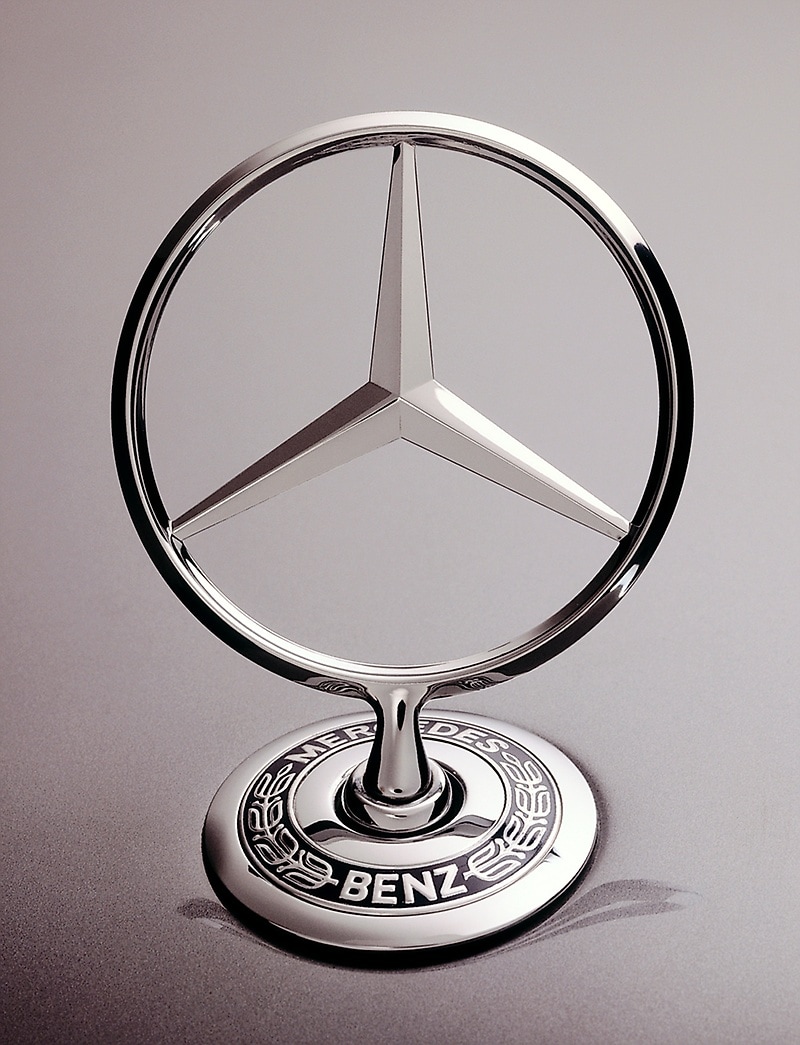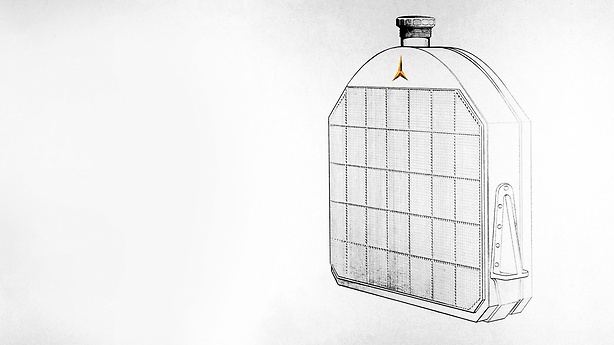Exceptions included the rear-engined 130 model, whose star lies flat on the panel of the aerodynamically designed front end instead of standing upright due to the absence of the radiator here. The front end of the "Silver Arrows" racing machines of the 1930s also sport this star.
However, it was the combination of radiator figure and badge that appeared on most Mercedes-Benz passenger car models. It conveyed a dual message: driving enjoyment on the one hand and safe motoring under the lucky Mercedes-Benz star on the other. This remained the case until well after World War II as most Mercedes-Benz models bore the star as a radiator figure with a badge showing the complete trademark with star, laurel wreath and lettering beneath it until into the 1990s. During the last decade of the 20th century, this badge gradually disappeared from the front end, however, leaving just the star. The trademark moved from the stand-alone badge to the base of the radiator emblem – as on the S-Class (model series W 140), for example.
The new face of Mercedes‑Benz
A further form of the front design with a centrally positioned star developed alongside the radiator emblem. Originally this form of the emblem was reserved for commercial vehicles – often in combination with the "Diesel" lettering. Unveiled in 1952, the Mercedes-Benz 300 SL race car (W 194 model series) delivered a brand-new take on this large Mercedes star: designed for competition, the car displayed an oversize symbol in the centre of the radiator air intake – providing a racy expression of the brand identity. This dynamic, powerful design also featured on the standard-production 300 SL and 190 SL sports cars, albeit in a refined form with horizontal chrome bar. As a consequence, the Mercedes-Benz range of passenger cars had a new face that stood for sporty exclusivity: the sports cars in the subsequent SL-Class line up have displayed this large, centrally positioned Mercedes star on the radiator grille since the W 198 and W 121 model series were introduced.
,xPosition=0,yPosition=0.5)

,xPosition=1.0,yPosition=0)